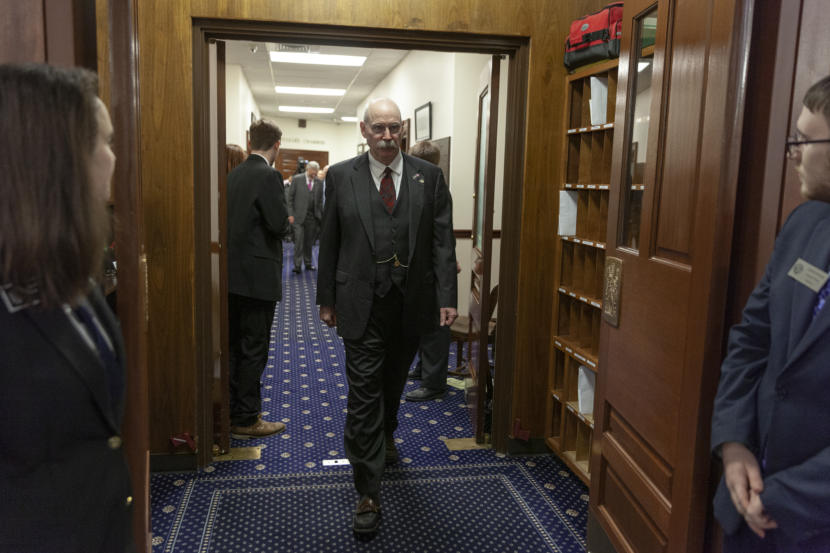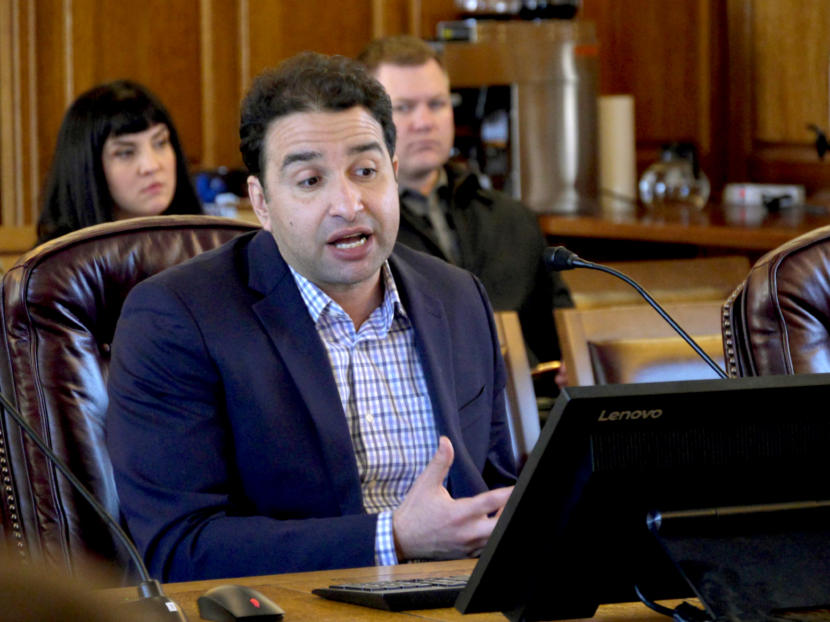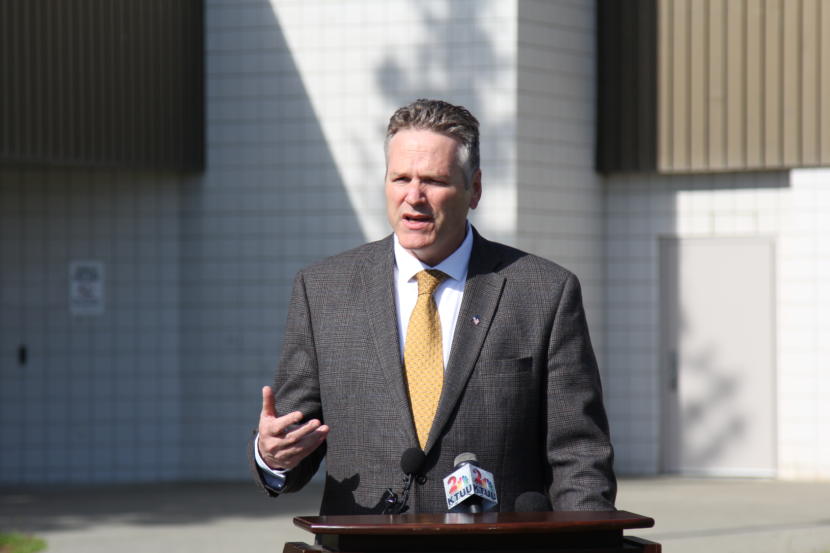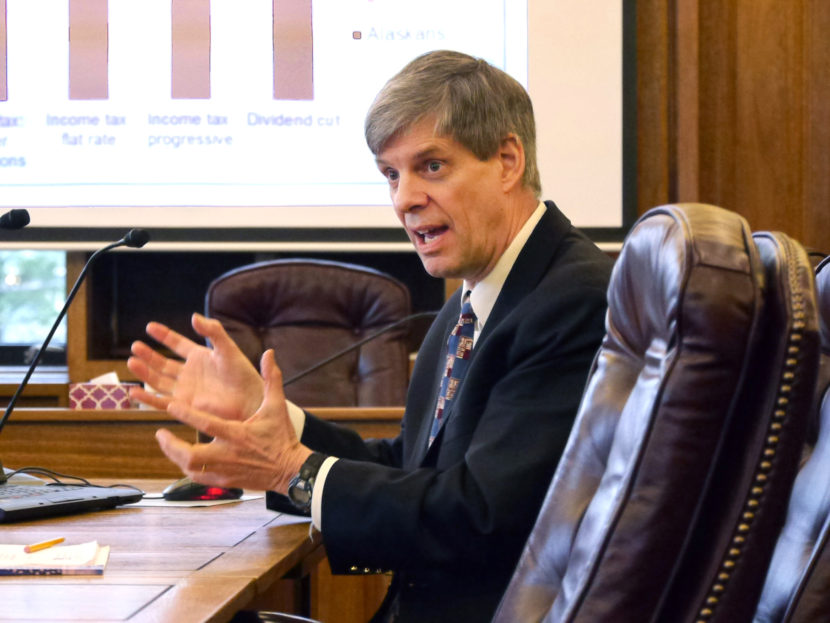
As Alaska lawmakers prepare to reconvene, some are pushing for an extra permanent fund dividend payment, which would come on top of the $1,000 that the Legislature already budgeted for dividends earlier this year.
Lawmakers are already planning to spend what they deem to be the maximum sustainable amount from the $62 billion fund, or about $3 billion, in the fiscal year that starts July 1. The cash will pay for dividends and government services.
Spending more than that risks reducing the fund’s overall value, leaving less money for future generations of Alaskans.
But some lawmakers, led by Gov. Mike Dunleavy, say the dire, once-in-generations nature of the coronavirus pandemic requires drastic measures in response. And a number of of Alaska economists agree — though they stress that extra spending from the Alaska Permanent Fund should done carefully, and that it comes with trade-offs.
Ralph Townsend, an economics professor and director of University of Alaska Anchorage’s Institute of Social and Economic Research, said he’s “deeply worried” about arguments against extra permanent fund spending on the basis that will leave less money available for Alaskans’ descendants.
“I would not hesitate to withdraw from my retirement account for expenses to help my brother get through cancer treatment, even if it means my children will have a smaller inheritance,” Townsend wrote in an email. “My kids have plenty of time to adjust to that smaller inheritance and they would agree with my choice. That is exactly our situation today.”
More than 60,000 workers, or about 19% of the state workforce, have active or pending claims for unemployment benefits. But the pandemic is also hitting Alaska’s budget by devastating the oil and tourism industries and depressing the overall value of the permanent Fund, which determines the amount available for government spending each year.
In an interview Monday, Dunleavy again called on lawmakers to approve additional spending from the permanent fund’s earnings reserve account, which he described as a rainy-day fund.
“If this is not raining, I don’t see how you could ever say something will rain,” Dunleavy said. “To put dollars into the hands of individual Alaskans so that they can pay for their bills, their food, their gas, I can’t think of a better approach at this stage in the game.”
But Dunleavy’s ideas face skepticism from some legislative leaders. Sen. Bert Stedman, R-Sitka, and co-chair of the Senate Finance Committee, said he wants to see what needs remain after federal aid arrives in the state. And he noted that lawmakers are getting dire forecasts about shortfalls in next year’s budget.
“I do recognize that there are resources in the permanent fund. But I have a serious concern about what’s coming at us next winter,” Stedman said. “We have crippling oil prices and revenue projections right now for the state, and I’m not so sure that the most difficult time upon us is here today.”

Economists endorse more permanent fund spending
While a number of economists have pushed Alaska lawmakers to bring revenues in line with spending over the past few years, many now agree that setting aside normal fiscal discipline during the pandemic is justified.
Concerns about future generations and opportunity costs are valid, but those arguments assume the state’s economy will be okay through the current crisis without intervention from policymakers, said Mouhcine Guettabi, an associate professor of economics at ISER.
“I just don’t think that’s true,” Guettabi said. “You’re going to have to fight to get the economy going, or at least to make sure that it’s stable enough and be there to fight another day, or in a year or two years.”
Anchorage economics professor Matt Berman endorsed the idea of paying the already-budgeted dividend “as soon as feasible,” arguing that “now is when people need the cash.”
The question of a second PFD, however, prompted skepticism from economists. Several of them agreed that additional state aid from the permanent fund is merited — but they pointed out that the dividend is a blunt instrument, because it’s paid equally to all qualified residents regardless of income or status.
That means paying one during the pandemic would likely put cash in the hands of many people who don’t need it.
“The current suffering is not spread equally,” Roger Marks, an economist in Anchorage, wrote in an email. “The wealthier half of Alaskans that receive half the dividends do not need it. People who have not lost their jobs do not need it.”

Tradeoffs between speed and efficiency
Dunleavy’s response to this argument is that Alaskans need extra cash now, and that setting up a more focused aid program would take time. “Every day we’re shaving off gross domestic product, and people are being laid off,” he said.
Several economists agreed that there’s a tradeoff between the speed at which policymakers move and how precisely they can focus aid programs.
The best policy right now would be targeted towards people who have lost jobs or had to close businesses — measures like loans, expanded unemployment insurance, food stamps and assistance payments, said Kevin Berry, an assistant economics professor at ISER.
Economists also said policymakers should try to coordinate state support with the array of federal aid programs passed by Congress. But, Berry said, targeting policy takes time and risks missing people.
“Something broad like a PFD is potentially more politically feasible,” Berry said. Shuttered businesses and people without much money in their savings accounts might not have time for lawmakers to negotiate a more focused package, he added.
A few economists expressed interest in the idea of making smaller payments, perhaps on a monthly basis, suggested by former U.S. Sen. Mark Begich and former Gov. Sean Parnell, who are leading Dunleavy’s economic recovery efforts.
Research suggests that smaller, regular payments — perhaps monthly — are more likely to be used for short-term goods like food and fuel, while a larger payment is more likely to be spent on durable goods like a car or big appliances, said Jonathan King, an Anchorage economist.
“If you’re worried about people’s quality of life during what is likely a medium-term event, smaller monthly payments makes more sense than a one-time larger, extra PFD,” King said in an email.

Dividend spending leaves less for other programs
After the next fiscal year, even if lawmakers decide to pay no dividend at all, they’re still likely to face a budget deficit, which means that cash will be at a premium.
“We absolutely have no money to spare,” said Gunnar Knapp, a retired ISER economist.
If a larger PFD leaves less cash available for government services, cuts to education, the university system or public safety would “make economic development and growth in the long-run less likely,” said Berry.
A crash in tourism-related tax revenue is also likely to cause budget shortfalls for a number of Alaska’s cities and boroughs, which could need state assistance.
“There’s an argument to be made that helping these communities maintain core services during this unprecedented crisis, via a municipal stabilization fund, is a better use of money than an extra PFD,” said King.
An aid package could help preserve jobs and services, like education and health care, that could otherwise disappear or be left to the state, King added. Townsend said that the state and municipalities should also weigh the need for major investment in public health initiatives to help manage the pandemic over the next 18 months.
One other problem: There’s a finite amount of money available in the earnings reserve account, which is available for spending by a simple majority vote by the Legislature. If lawmakers spend too much, there might not be enough left for essential government programs.
“This account will be needed for public services,” said Marks. “Even without dividends it will be extremely stressed next year. Paying dividends will drain it more.” He and three other economists said taxes would be needed to help fill Alaska’s deficit.
